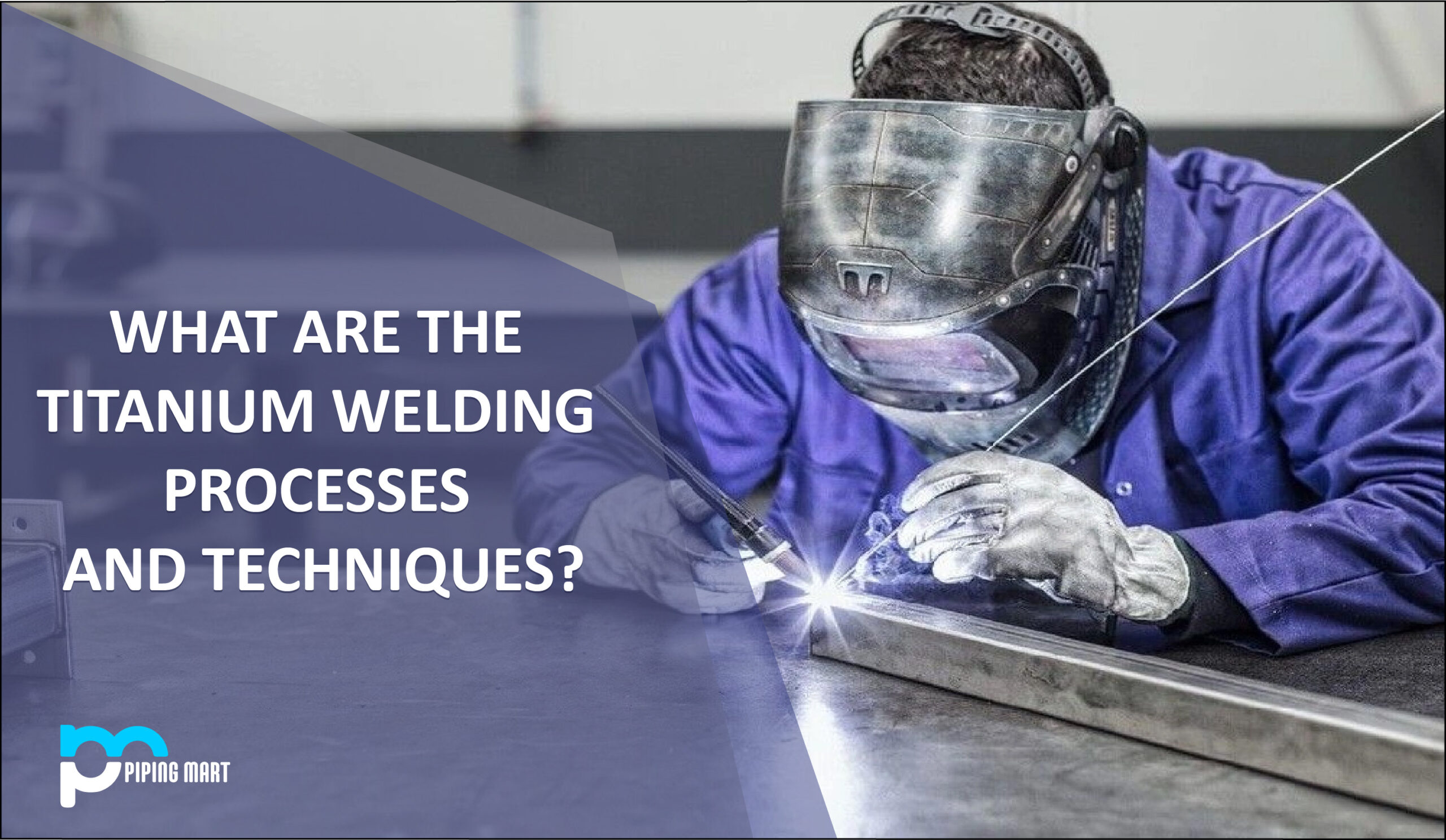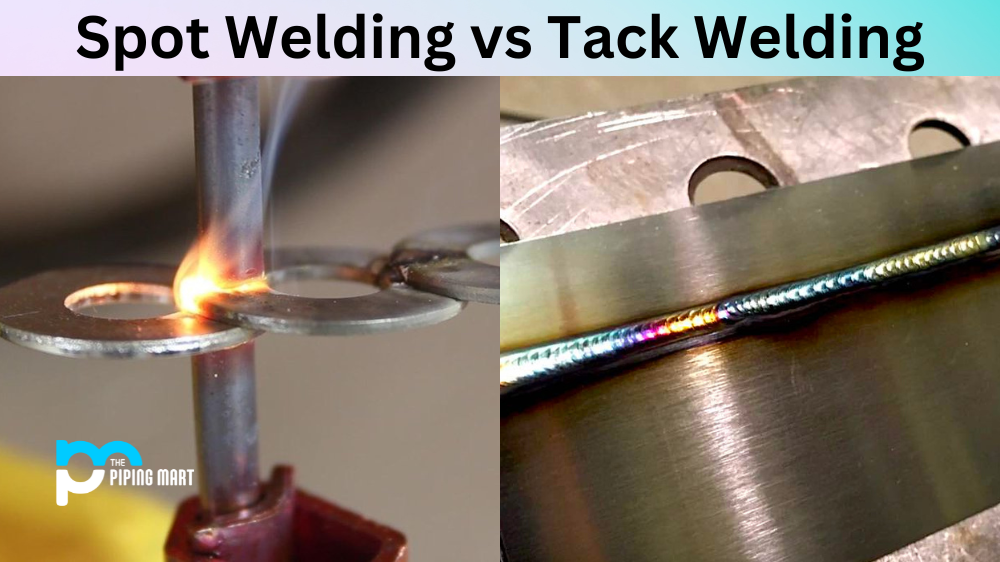Since it is lightweight, strong, and resistant to corrosion, titanium is considered an unusual metal. However, it was once thought that only sealed chambers could accomplish proper titanium welding. It is a reactive metal that is susceptible to contamination by external gases. However, it’s not as tough to weld titanium as many welders believe. The only thing that differs from welding other types of metal is maintaining sufficient gas shielding.
Welding Titanium
The most popular welding methods for titanium and its alloys are gas tungsten arc (GTA or TIG) and gas metal arc (GMA or MIG). Resistance, plasma arc, electron beam, and friction welding are also occasionally utilized on titanium. These procedures all have benefits for particular circumstances.
Titanium and the majority of titanium alloys are easily welded utilizing a variety of welding techniques. In their as-welded state, properly formed welds are ductile and, in most conditions, are just as corrosion-resistant as the base metal. On the other side, improper welds may be embrittled and less corrosion-resistant than base metal.
Similar methods and tools are needed for welding titanium and other high-performance materials like stainless steel or nickel-base alloys. However, compared to these materials, titanium necessitates more significant attention to cleanliness and the usage of additional inert gas shielding.
The air must be kept entirely out of molten titanium weld metal. Additionally, until temperatures fall below 800°F (427°C), hot heat-affected zones and the root side of titanium welds must be protected.
Titanium forms brittle compounds with air, moisture, grease, dirt, refractories, and most other metals. Standard welding techniques like gas welding, shielded metal arc, flux-cored arc, and submerged arc welding are inappropriate due to titanium’s reactivity with gases and fluxes.
Since titanium produces brittle compounds with most other metals, welding titanium to the most dissimilar metals is also impractical; titanium can be welded to zirconium, tantalum, and niobium.
Despite the necessary safeguards, many fabricators routinely and affordably weld titanium, producing solid and ductile welds at rates equivalent to many other high-performance materials.
One of the significant advantages of welding is that commercially pure titanium grades are over 99% pure titanium and do not worry about segregation. The same is true for commercially pure grades of welding wire or rod.
Welding Environment
Although chamber welding is still occasionally used, the majority of titanium welding nowadays is done in open fabrication shops. Welding in the field is typical. To weld titanium, a clean environment is required wherever the welding is done.
To help with creating high-quality welds, a separate space has been designated just for welding titanium. This area needs to be kept clean and away from activities that can cause mud, like grinding, torch cutting, and painting. Additionally, the welding area should have no air draughts and appropriate humidity levels.
Weld Preparation
The right weld preparation is one of the most crucial elements in establishing the quality of a titanium weld.
To get rid of any impurities and to get rid of oil, grease, or dirt, clean the titanium’s surface. Utilizing chemicals made especially for titanium is recommended. Remember that your generated weld will be stronger the cleaner the titanium is.
You can use a steam cleaner or a sodium hydroxide solution that has been diluted to get rid of the impurities.
Use a little hot-air blower to ensure no moisture is left on the surface. Please make sure not to use it on any flammable solvents, though.
Ensure that all of the welding components are dry and clean.
Never clean titanium with any chlorine-based products.
Even your own hands could spread disease. Rubber gloves, however, may contain chlorine; choose plastic or cotton gloves instead.
Please ensure the solvents you used to clean the surface have entirely evaporated before you strike the arc because they typically have a low flash point.
Choose A Shielding Gas
The correct shield gas must be used to achieve a strong weld since titanium rapidly forms brittle compounds when it comes into contact with air, grease, dirt, moisture, and other metals. Welders often do the procedure using 99.999% pure Argon. The best protection against the environment is only offered by extremely pure Argon and helium.
Please ensure you only purchase shield gas from reputable vendors when you acquire it for your welding operation. Discolouration may occur even if the Argon is somewhat less pure than necessary. You don’t want to have a yellowish tint weld because it will be the result. Blue colouring and mottling can also be caused by impure gas or short covering.
With titanium, you must ensure that the back is shielded from the atmosphere and the front. Any part exposed to heat will respond negatively to oxygen contact.
Use shielding gas-filled enclosed compartments built of glove boxes for smaller components. You can even employ purge monitors and specially designed polyethene purge gas chambers. You can use them to confirm sufficient Argon in the chamber to offer the best protection.
The following three procedures must be taken if you want to have the appropriate level of coverage during welding:
- Primary Shielding is often integrated into the welding torch and offers the primary protection required for shielding the molten weld puddle. A typical water-cooled torch with a ceramic cup and gas lenses is available for usage. For optimum coverage, we advise using a torch with a larger cup.
- Secondary Shielding – Shields that trail off offer additional protection. They ensure that all heat-affected areas are kept free from contamination and are often attached to the end of welding torches.
- Backup Shielding – These gadgets have a similar appearance to trailing shields and do almost the same job. They are either portable gadgets or have tape holding them in place. They almost seldom arrive already fitted to the welding torch.
Selecting The Right Filler Wire
We advise selecting a filler wire with the same qualities as the base material for welding titanium and its alloys. Another option is to choose a wire rated at a strength level one grade lower than the base metal. In some circumstances, the welder might even switch out the filler wire entirely.
The characteristics and configuration of the joint will influence the filler wire you choose. Enhancing joint ductility
Use a filler metal with a lower yield strength of the base when welding unalloyed titanium with higher strength.
The unalloyed filler material can be used when welding titanium under the Ti-5A1-2.5Sn and Ti-6A1-4V classes.
Another choice is to use a filler metal with less base metal in oxygen, nitrogen, hydrogen, carbon, and other alloying elements.
Usable Welding Processes
The following welding techniques can be used to join titanium and titanium alloys:
- Electron-beam welding (EBW)
- Gas-tungsten arc welding (GTAW) or (TIG) tungsten Inert Gas Welding
- Resistance welding (RW)
- Laser-beam welding (LBW)
- Plasma arc welding (PAW)
- Gas-metal arc welding (GMAW) or (MIG) Metal Inert Gas
- Friction welding (FRW)
Electron Beam Welding
A fast electron beam is used in this fusion technique to fuse two metals. Intense heat is produced when the beam makes contact with the metal parts. A solid junction is created when the two plates melt and merge. Because the generated joints are so durable, electron beam welding is used in the aerospace and aviation production industries.
You can utilize the electron beam welding technique for plates ranging in thickness from 6 mm to 76 mm and beyond. Due to the high vacuum environment used during the process, high-quality welds with minimal contamination levels are produced.
Tungsten Inert Gas/GTAW
A non-consumable tungsten electrode is used in TIG or GTA welding techniques to transfer current to the welding arc. To avoid weak and poor-quality welds, shielding gas is utilized to shield the weld puddle from external contamination. You require a filler metal or wire for the weld junction during the process.
It is a method frequently used to fuse titanium and its alloys. For square butt groove joints on base metals up to 2.5 mm in thickness, TIG can be used without filler material. To ensure that the resulting weld joint is durable for thicker sheets, you must employ a filler metal.
Resistance Welding (RW)
An example of a thermo-electric process is resistance welding. It fuses two pieces of metal by running a regulated current through the plates for a predetermined amount of time. It is also typical to perform the process with a lot of pressure. The area that needs to be connected receives all the heat in this procedure.
For spot or continuous welds, resistance welding can be used to unite titanium and its alloys. It is beneficial when welding titanium to metals like carbon steel or stainless steel plates.
Laser-Beam Welding (LBW)
This method of using a laser to fuse two pieces of metal is another one. It warms the spot where the two plates meet, causing them to melt together and form a joint. A practical, long-lasting weld is produced once the molten weld puddle has cooled and solidified.
Due to the lack of a vacuum chamber, titanium welding using laser beams is becoming increasingly popular. However, since there is still a chance of contamination, shielding gas must still be used.
Although both a laser beam and an electron beam are used in fusion welding, the former’s application is more limited. The procedure cannot be used effectively on titanium plates thicker than 13mm.
Plasma Arc Welding (PAW)
TIG and plasma arc welding use an arc to join a tungsten electrode to the workpiece. It works effectively even on thicker metal sheets and may be used on practically all types of titanium. You can also utilize the keyhole technique on a one-pass plate up to 13 mm thick.
Metal Inert Gas (MIG)/ Gas-Metal Arc Welding (GMAW)
Solid filler metal wire is heated constantly and fed through a welding gun in MIG welding. To prevent contamination of the weld puddle, the procedure justifies using shielding gas. Due to its high metal deposition and productivity rates, GMAW is favoured by many welders.
The method can also be used to fuse titanium onto thicker than three millimetres plates. You may create welds of excellent quality using the pulsed current method. The technique proves to be less expensive than others, mainly when used on titanium plates thicker than 13mm.
Metal Inert Gas (MIG)/ Gas-Metal Arc Welding (GMAW)
Solid filler metal wire is heated constantly and fed through a welding gun in MIG welding. To prevent contamination of the weld puddle, the procedure justifies using shielding gas. Due to its high metal deposition and productivity rates, GMAW is favoured by many welders.
The method can also be used to fuse titanium onto thicker than three millimetres plates. You may create welds of excellent quality using the pulsed current method. The technique proves to be less expensive than others, mainly when used on titanium plates thicker than 13mm.
Friction Welding (FRW)
The technique employs friction to bind two pieces of metal together, as the name would imply. This method of solid-state welding produces a connection that is just as durable as the base. It can be used to join pipes, tubes, or rods and is widely employed in various sectors. It operates exceptionally well when you can maintain joint cleanliness without additional preventive measures.

Pipingmart is B2B portal specializes in industrial, metal and piping products. Also, share latest information and news related to products, materials and different types grades to help business dealing in this industry.




